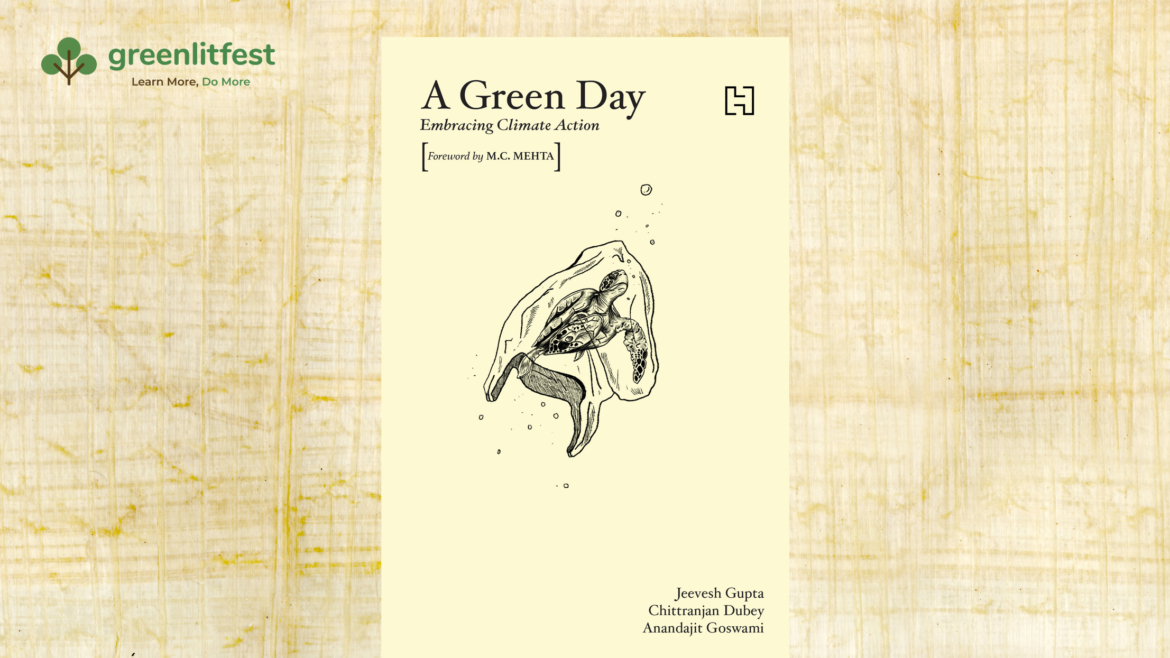By Anandajit Goswami
Francis Beacon once said to know the nature outside we need to know the nature within.
As a child, my quest to understand the natural world outside started with the thirst to know the nature within. While the environment within was lost in multiple conflicts of genetics, culture, conditioning, and hereditarianism, the view outside, and a bond with the natural world helped me understand my inner self deeply. Often, when the answers to the dilemma within were not available, I found a semblance of clarity in the green fields of West Bengal while travelling to Krishnanagar, Durgapur, and Mogra, away from Kolkata.
Every journey of mine on a train that took me away from Kolkata brought me nearer to the self, all the while aided by the marvel of green just outside the window. The journey from Kolkata was not a ticket away from the refugee homes of the city where I grew up but was a chance to be closer to the self through the visions of landscapes, a grand synchrony of nature within and outside.
Each such journey to the rural villages, towns and suburbs away from Kolkata was what I would like to call a green sojourn. The urban society and all its complexities burdened me immensely and I often refer to them as the grey days of my life. The emotions of rage, despair, anguish, helplessness and anxiety would all get mixed up to meet their natural deaths in the tunnels of those journeys. I have to confess that I have met the metaphorical death many times on these tracks to the rural lands. I emerged from those tunnels with a gleam of light, a sense of hope.
The days in Kolkata weren’t entirely miserable. Our saviour was the monsoon. On some days of monsoon or summer months struck by norwesters, the grey days of city life would turn a joyful green with a plunge into the ponds to wash the mud stains on my body after football matches in the rain and storm. On such monsoon days, the stains of my despair, the painful feeling of exclusion from the city privileges, and elitism were driven away by the mud on the football grounds of the refugee space and habitation where I grew up.
In the football grounds within the TB Hospital Campus of Jadavpur in the 80s and early 90s, humans and pigs played together, rolling in the mud, revelling in freedom. In those days of my childhood, humans and pigs had no hierarchy; we were one with the soil on our feet. At those moments, we- the bunch of us young boys and the pigs, enjoyed the smell of moist grass, the brutal monsoon rains, and cuts and bruises on our bodies and our lives. The rage and despair that was boiling within melted in the rain while playing together with the pigs.
Then, one day, I left Kolkata for Delhi. Somewhere facing the city space of Delhi, I discovered the colour of the spaces within me. I found out that I was green within, and I constantly carried the lushness of Bengal in me. However, the green outside was facing the threat of extinction from the perils of human-induced climate change. I was fortunate to join hands with people who had discovered green within themselves, just like me. We had to fight to save what was left of the urbanscapes; we were doing it for ourselves as well as the city. I soon collaborated with my co-editors and co-authors, Jeevesh Gupta and Chittaranjan Dubey, for the book – A Green Day, published by Hachette India and represented by The Book Bakers.
The rage and despair gradually gave room to hope, which expanded and extended its arms to reach out to many across the world, and gradually, the chapters of the book were born with the guidance and support of my co-editors. The book’s journey began as a child’s wish to protect nature, not just the vast landscapes, but the spaces within too, and to see their mutual co-existence thrive. These voices will only multiply in the future and will counter the existential dilemmas that arise from rabid changes the land is subjected to.
From its inception to publication, A Green Day has been our earnest attempt to create a community that could aid each other in winning the battles that are rampant in the Anthropocene. It is a reminder to protect the landscapes, both within and outside the human mind.
A Green Day is a minor representation of the voices fighting and conquering rampant change every day. It is our call for collective action, and there is hope within these pages, proof that a major change is possible if we act together, mindfully.
Anandajit Goswami (anandajitgoswami.in) is the co-editor of the book A Green Day. He is also a professor, Director at School of Behavioural and Social Sciences, Research Director at Manav Rachna International Institute of Research and Studies and Independent Visiting Fellow at Ashoka Centre For People Centric Energy Transition, Ashoka University. He is also a member of the International and Indian Society For Ecological Economics and the founder of TOHRI Foundation.



